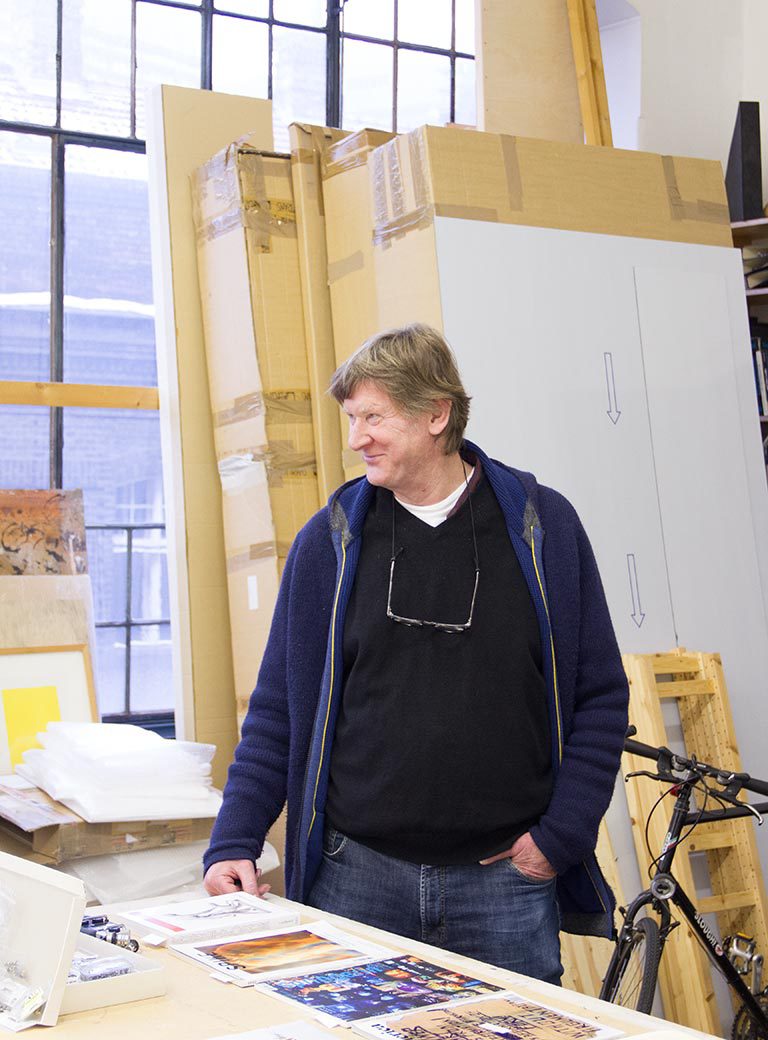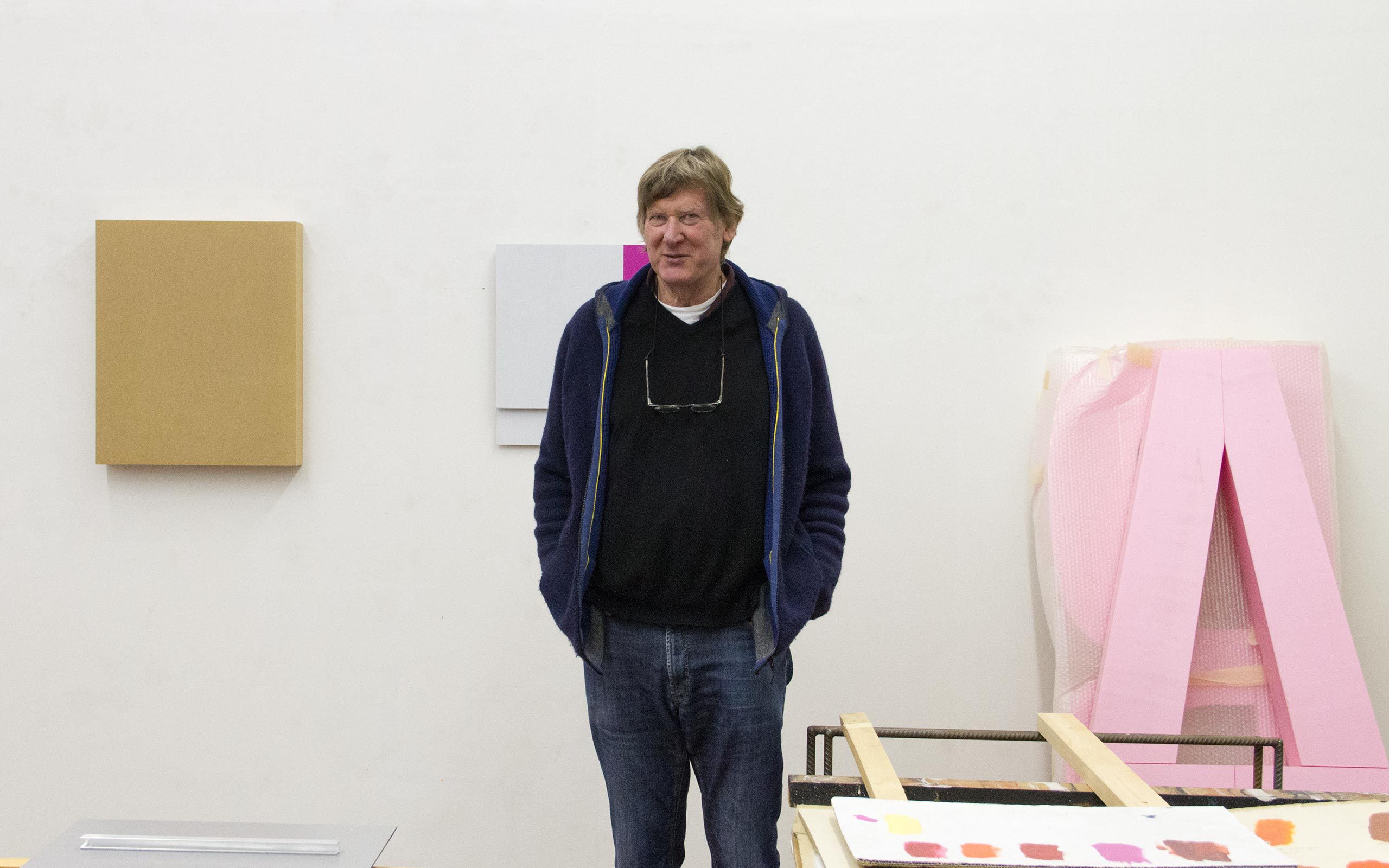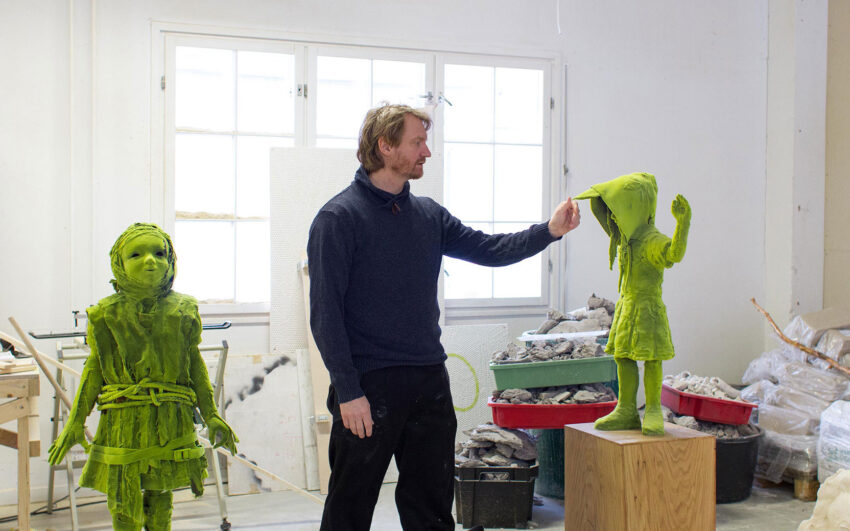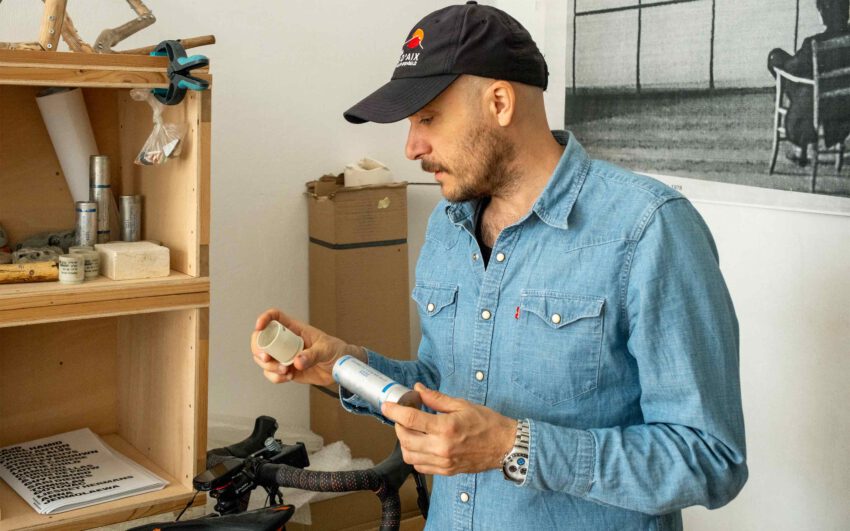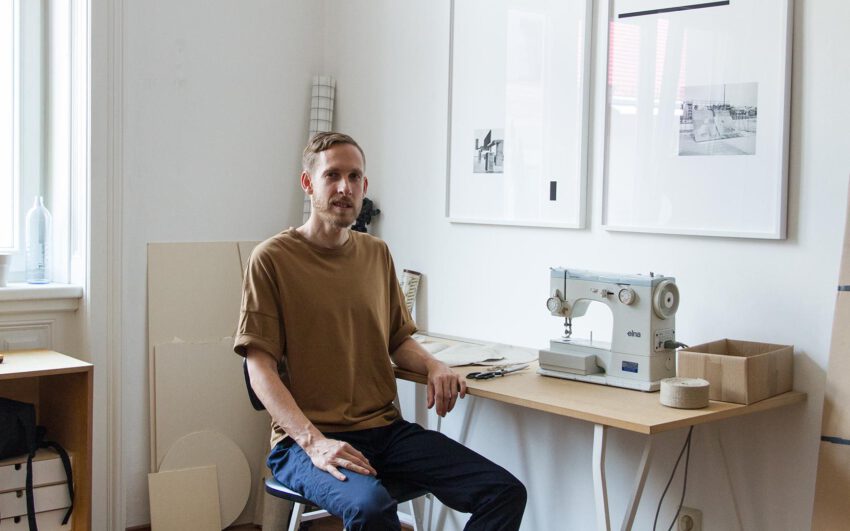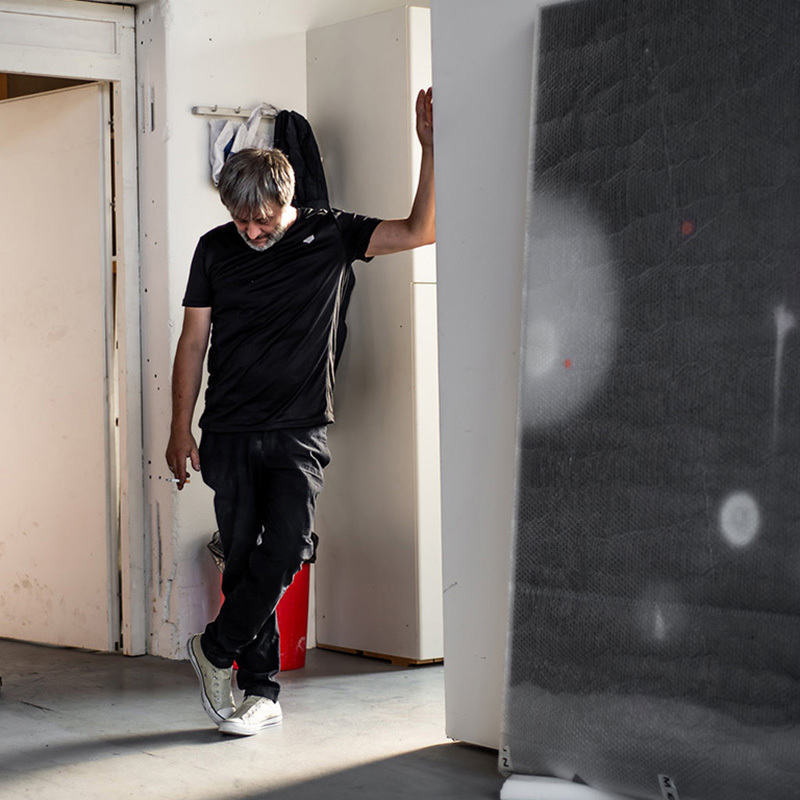Heinrich Dunst combines pictorial, sculptural, and language elements in his works to create intermedial intersections. His “meta-linguistic” spatial interventions and performances navigate the gap between what is visible and what can be expressed in language, the impossibility of translating one form into another, and the contexture of spatial presentations, questioning the clarity of the evoked references.
Heinrich, how did art begin with you? You come from the very small town of Hallein near Salzburg.
I've always been interested in asking certain weird questions about literature or the fine arts. At the University of Applied Arts in Vienna, Professors Bazon Brock and Peter Weibel offered me a provocative challenge in the investigation into different theoretical and artistic positions; this was a time when I had the opportunity to explore ideas that crossed media boundaries.
As someone who grew up in the countryside, the study of art was probably not an obvious direction to take. What were your influences?
My environment didn't have much influence on my decision to study art. There was no pressure from my family at that time. In the beginning, it wasn't easy for me in Vienna, it was a time of absolute disorientation, alternating between the feeling of being harried and incomprehension, yet constantly absorbing impressions. Only later in my studies did I fully realize what constellations or forms could emerge. Nevertheless, the area I wanted to deal with – forms or moments of development in the linguistic-visual field – had already become apparent at that time.
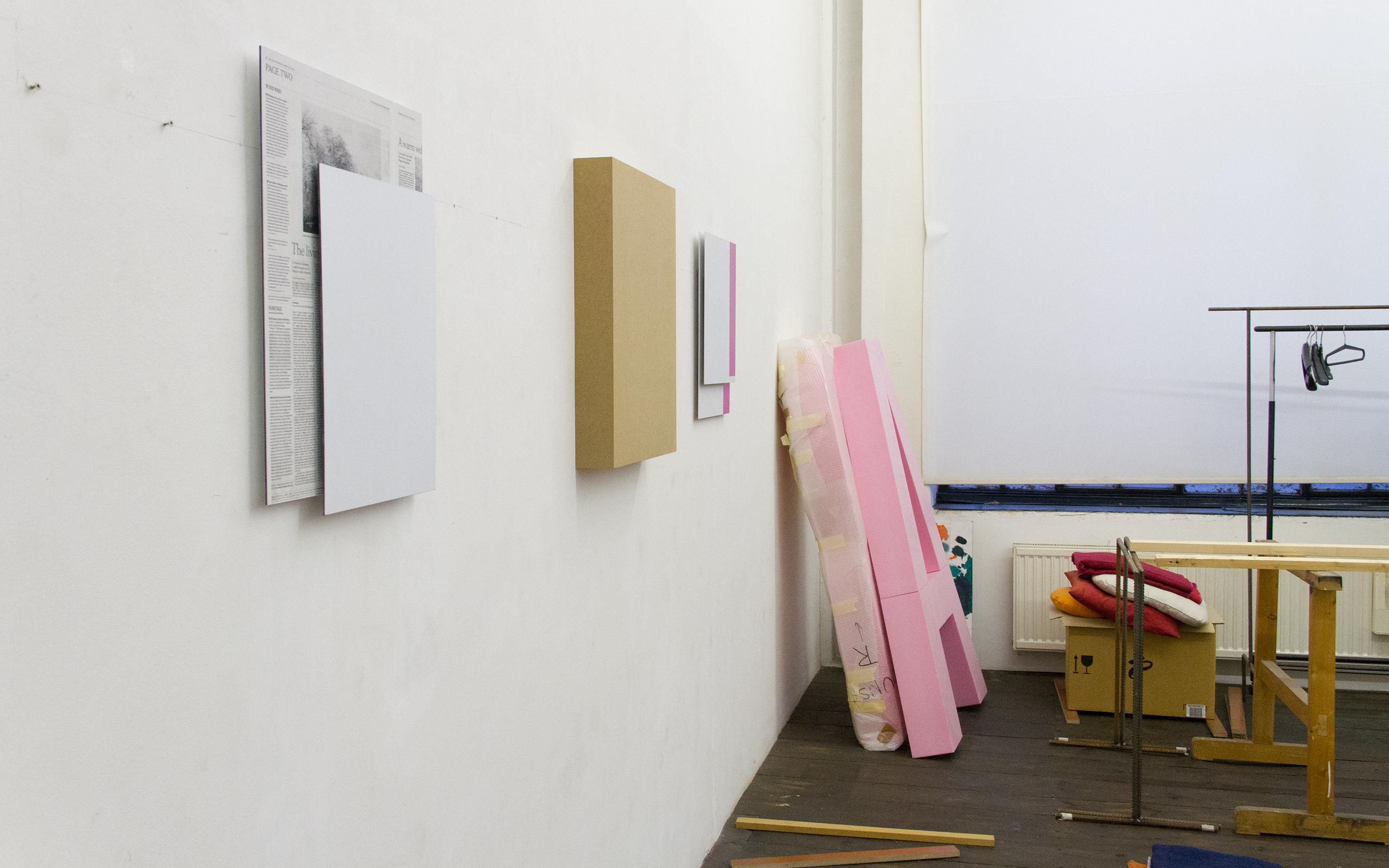
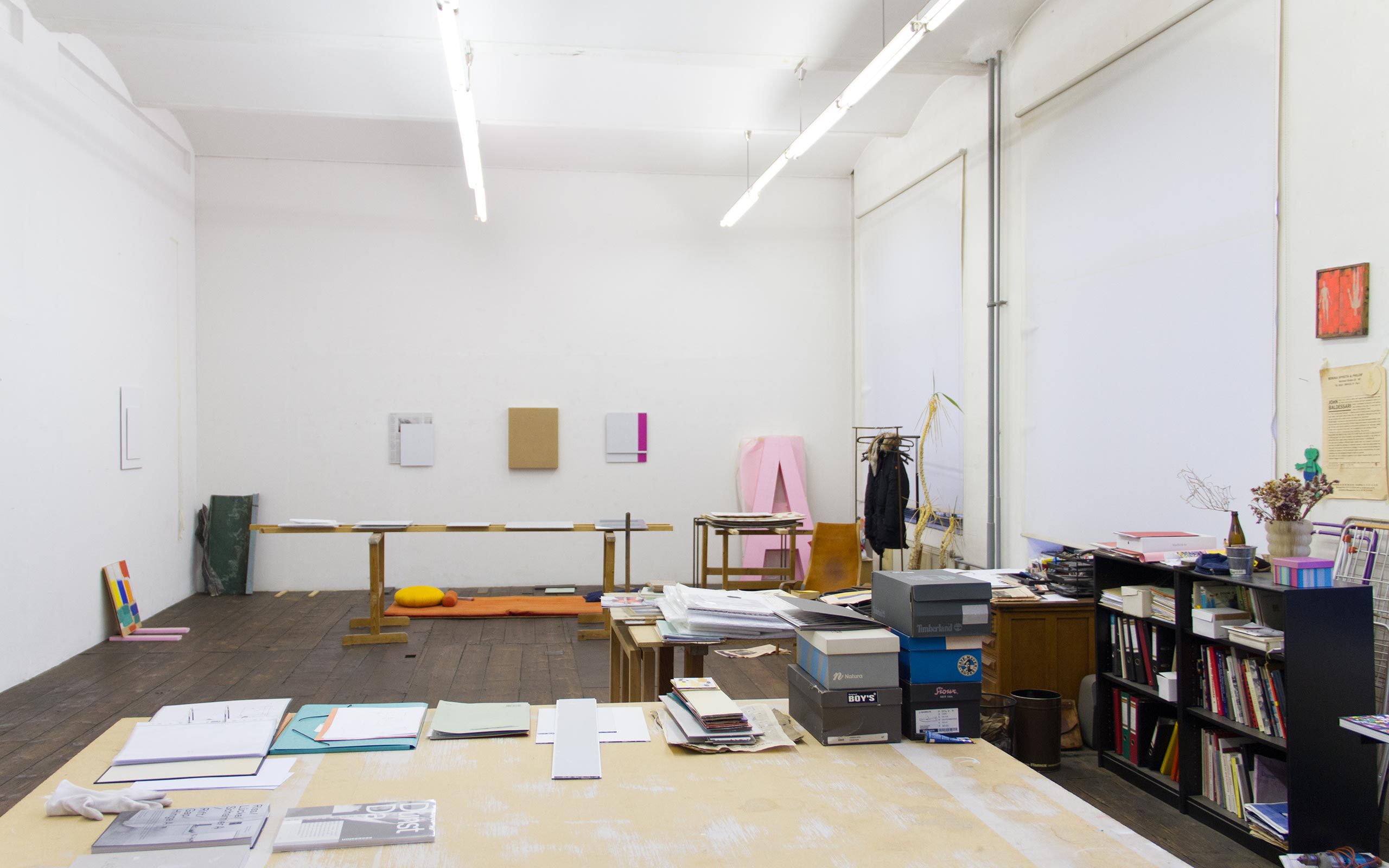
Originally, you come from painting, but over the years you have moved quite far away from it.
I actually approached painting more through reliefs and forms of objects, less typically from painting as such. For Heimo Zobernig and Gerwald Rockenschaub, too, sculptural and linguistic concepts were decisive for their work.
Like you, Zobernig and Rockenschaub are counted as being within Neo-geo, what does one understand regarding this movement?
The Neo-geo movement understood itself as an alternative to figurative-expressive painting. It manifested itself in the use of geometric, often colored, basic forms, which are not limited to painting, but are also taken up in space-filling installations or filigree works on paper. An essential feature of these geometric forms is that they are coded, thus elevating the geometric elements to the status of a metaphorical medium of communication. This codification often leads to figurative associations. In 1986, I participated alongside Heimo and Gerwald in the exhibition Tableaux Abstraits at Villa Arson in Nice where international colleagues including John Armleder and Blinky Palermo were also represented. It was there that I met Imi Knoebel, whom I still hold in great esteem today. This exhibition received international acclaim and became the prototype of the Neo-geo movement.
In your spatial interventions you investigate the gap between that which can be seen and that which can be expressed in words as a kind of further development of the Neo-geo movement. Forms of letters and words are an integral part of your work. One might almost assume that you consider yourself more of a writer or poet.
I see myself more in the field of the visual arts. Language is not only bound to letters and word language, but an exciting part of the forms emerges from the collision of these two building blocks: Word language and pictorial language.
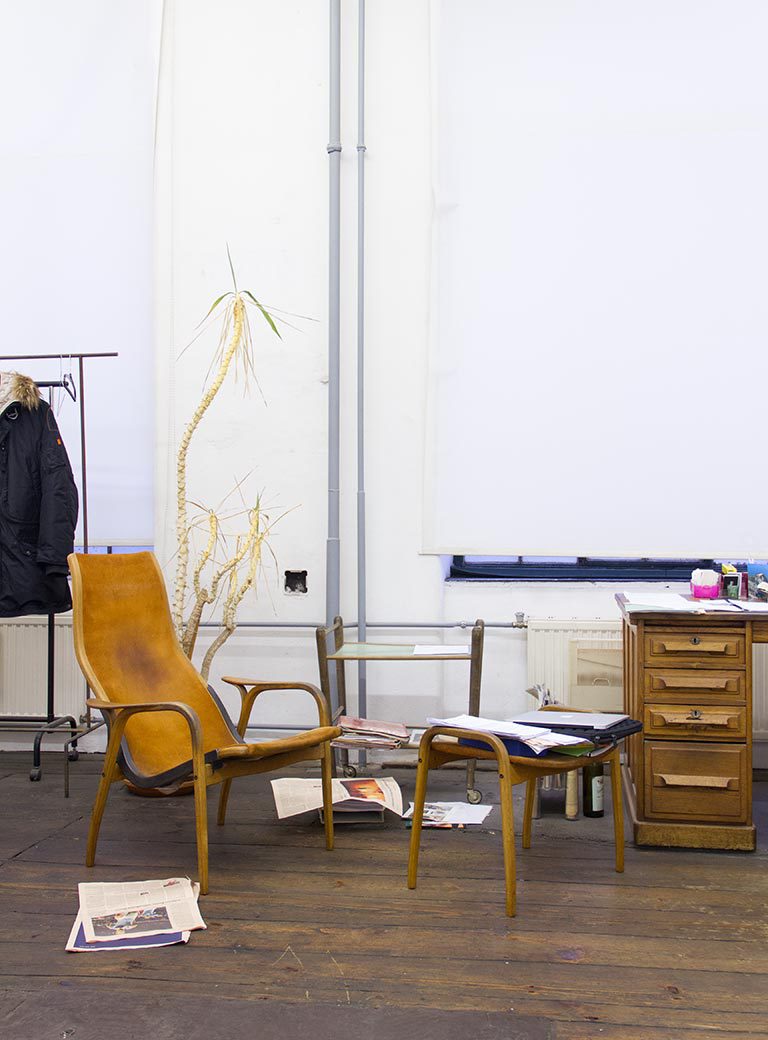
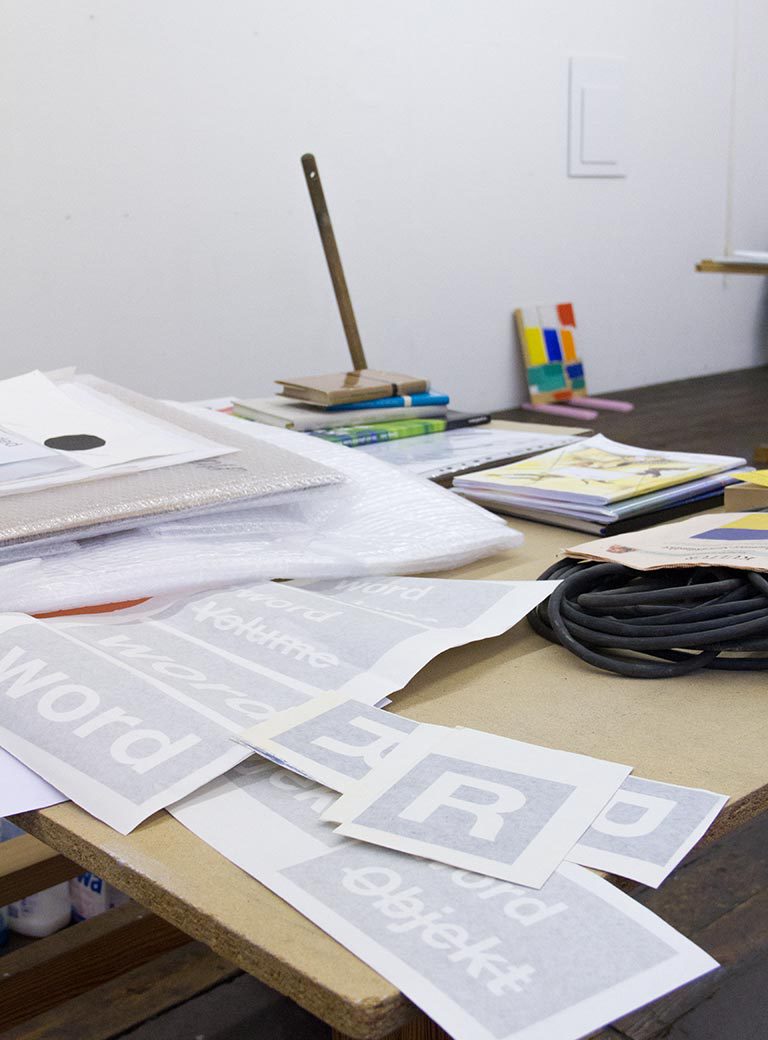
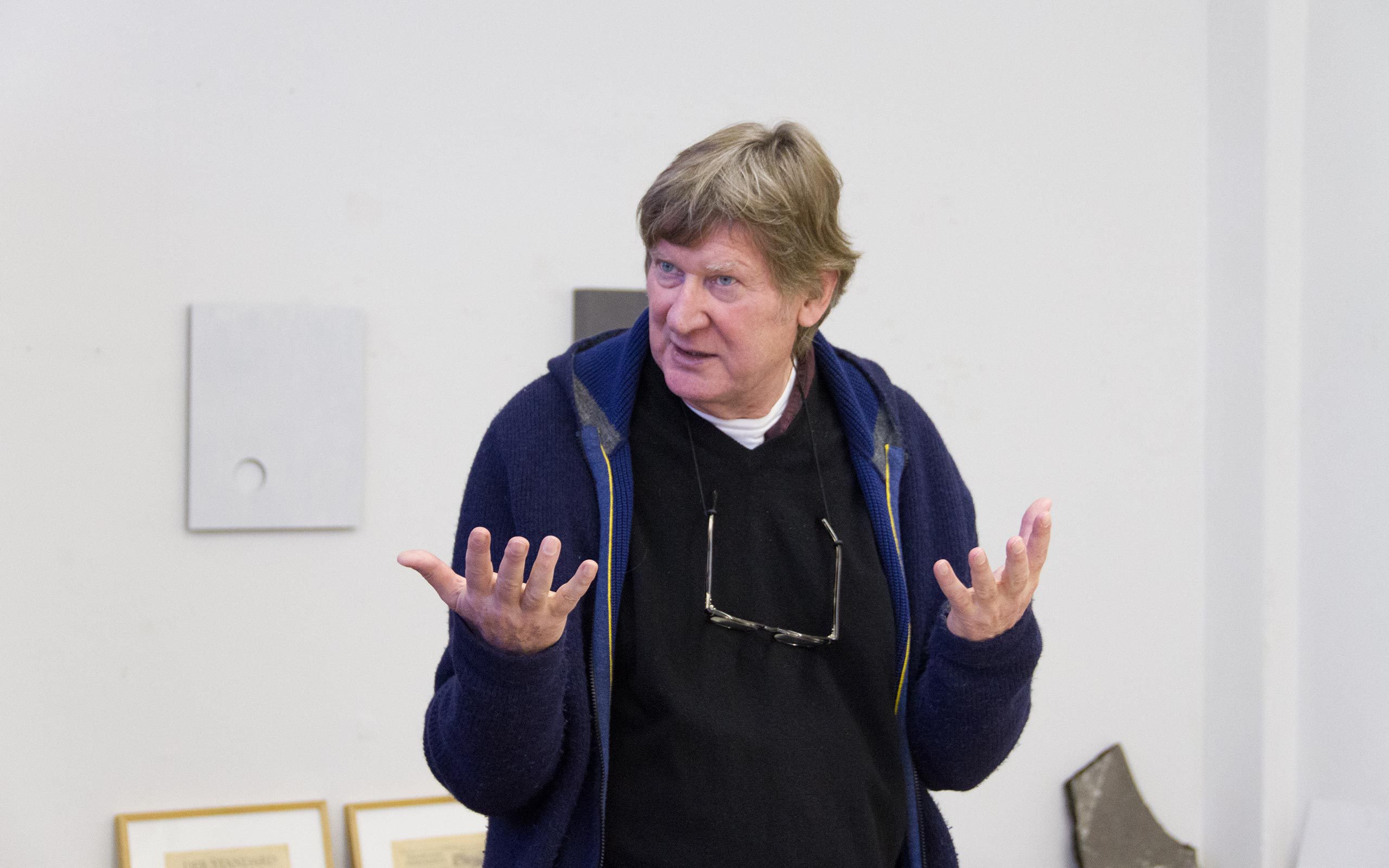
Your work contains a certain pink – a color that is not often used in the fine arts. How did the use of pink come about?
It was rather a coincidence. In 2008, I used this prefabricated industrial material for the first time for a work at the Haus der Industrie in Vienna. I simply left it as it was, i.e., without any further processing. I found the color very appealing. In addition to the color, the high level of conventionality that is used in the industrial sector, the prefabricated material as a high-tech material of the present, was also decisive for its use. I also left the logo that is used by industry, on the insulation boards. By appropriating a letter, you transfer this material into something subjective, this is exactly the interface that interested me. It worked rather well for the “pater noster” in the House of Industry (where the work was installed). Later I realized that the pink also works outside this context, and so I started to work more with it. Since then it has appeared in various museums and exhibitions. Pink isn't really used that often. Mike Kelley once wrote a paper about it.
"Pink is the hippie color. It's fairy dust color, gender-bender color, anti-I-beam-sculpture color, the color of New Man, the hermaphrodite color. Pink is the color of little girl's rooms, dresses, and playthings. (...) For some reason pink has been deemed an unsuitable color for art. Perhaps it's art's "Noble" stature that occasions this relegation. For, when pink is used, it is generally seen as perverse, as something purposefully wrong. Generally, pink is used in the fine arts as a weapon, deployed deliberately because of its inappropriateness. It is a color too loaded with cultural associations from outside the art context to sit comfortably within it. Measured against this scene of identification its "inappropriateness" to art unmasks the masculine orientation of the art world. But perhaps it is the feminine quality of this color that has made Pepto-Bismol such a popular product, when one is experiencing discomfort, one likes to be mothered and the pink fluid of Pepto-Bismol serves as a surrogate for soothing mother’s milk for the adult infant suffering from colic."
Is it true that you no longer want to use pink?
No, I haven’t left pink. One can’t really say that. The forms have been known through various presentations. I simply no longer want to have to keep up this dominance. These pieces are part of my work and not an “ideal form”. They are just a moment of illumination in my work, and just as language is a module that constantly leaps out and creates relative moments, it/pink ought to remain in my work. Form jumps in other contexts too, from abstraction into everyday life, and back again.
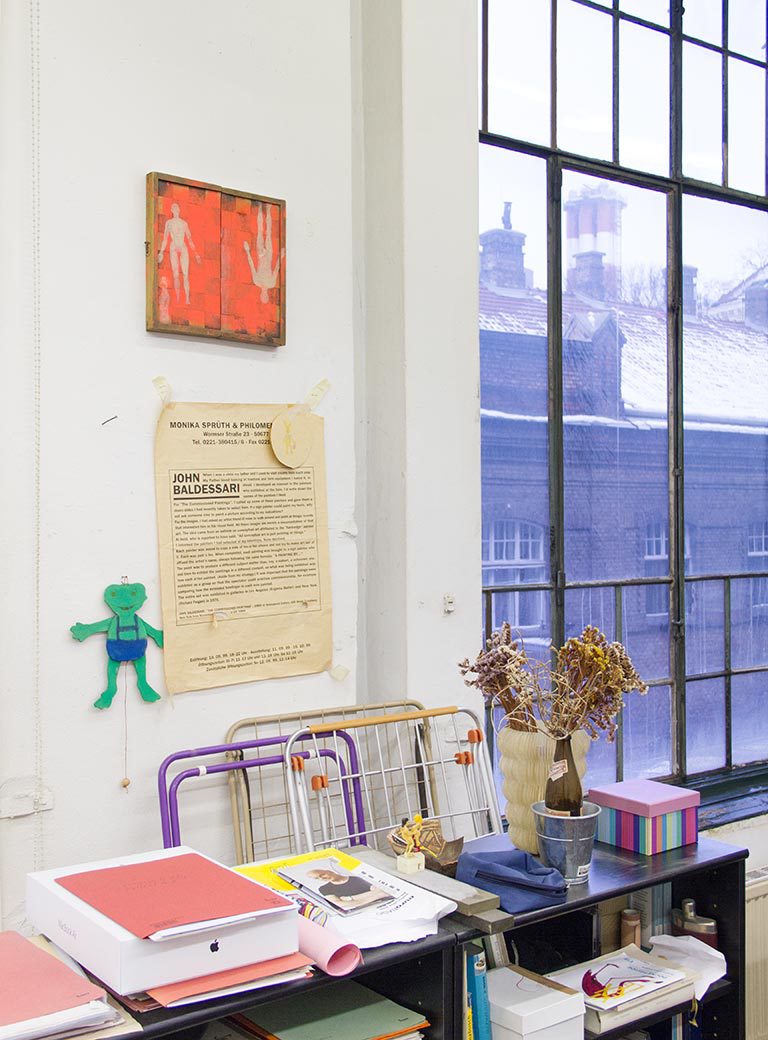

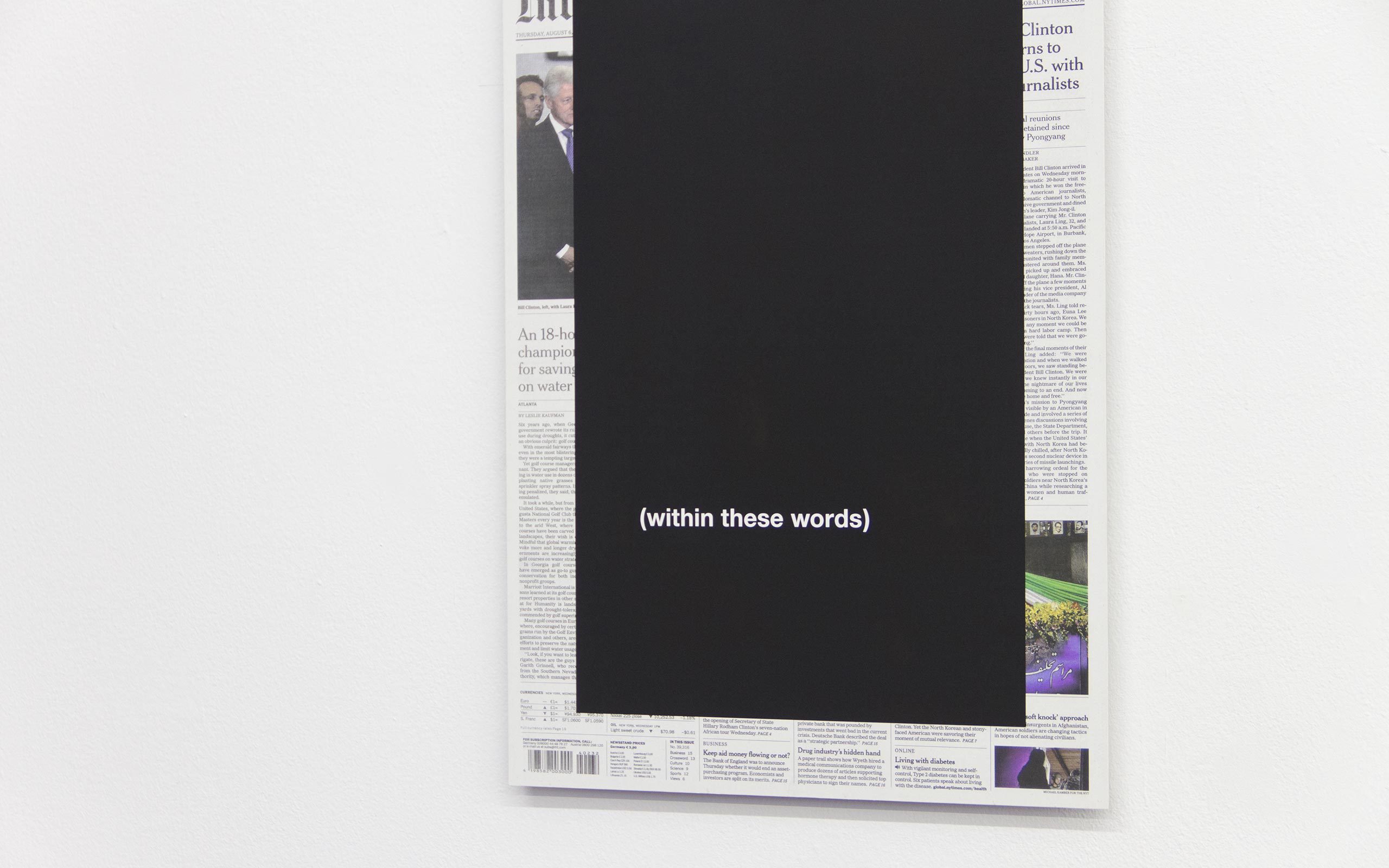
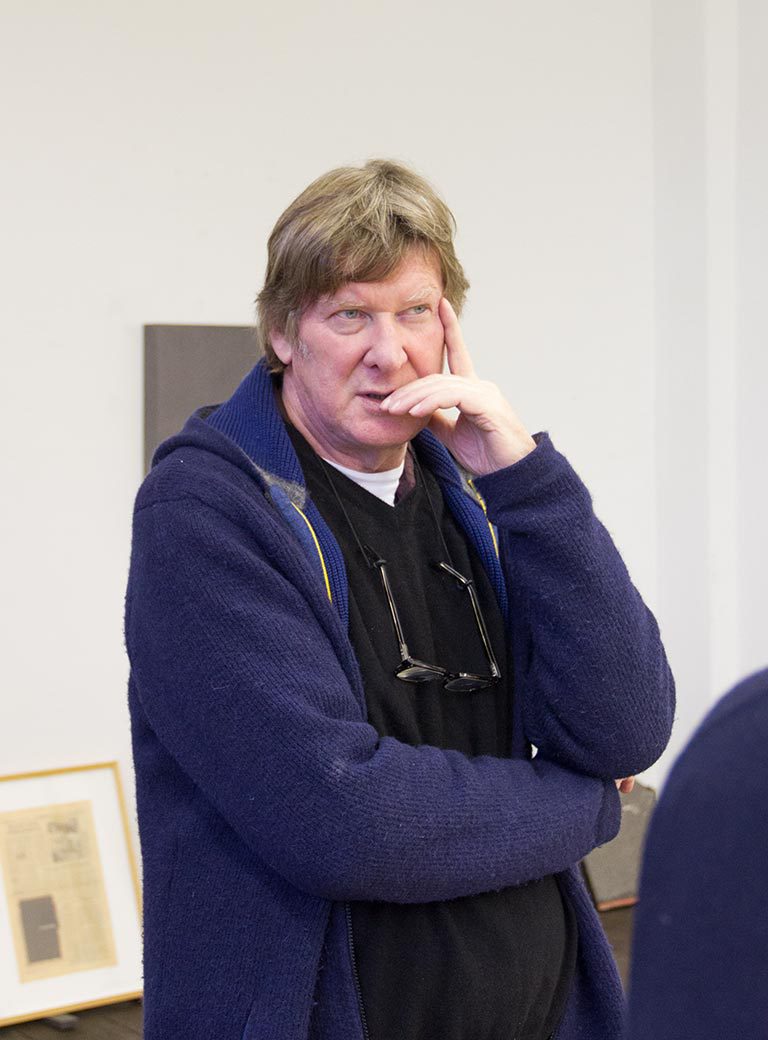
Could one say that pink has become something like a trademark of yours?
I wouldn't say that. It primarily characterizes an industrial material that is used in industrial production. It is used for building and insulating houses and is known throughout Europe for that. That it now appears in another context was my attempt to show an interface. The artist in his powerlessness screams and desires to move into the field of industry! The question is what happens if you get lost at this interface – in other words, at the point between the prefabricated and the appropriated. This is an incredibly exciting moment for the present, because the products are manufactured in a high-tech process in which many threads of digitization contribute to the production. Then when I produce it, further digital layers run into it, since we program a digital file – a PDF of a letter that I send to a company – and which in a second process connects this artistic idea of appropriation to this material, which was actually not intended in the production. The production process is therefore no longer a subjective creation.
Isn't it also a question of identity? For: is it a letter or an insulating board?
Yes, it is. When we discuss questions of identity today, especially in politics, I find the comments of the philosopher Chantal Mouffe very interesting. She says that identity is not a fixed attribution, neither in national nor ideological terms, but a structural relation that is constructed and that changes. This is what some people are afraid of. It is not an originally developed form. Identity is a structural construct that has to do with boundaries, relations and inscriptions.
In politics today this is often seen differently...
For the populists, identity is a fixed factor that cannot be questioned in its construction. When a populist speaks of moral and national attributions, these are not treated as constructed propositions, but as forced forms. This is madness, because it does not correspond to reality. There is actually not much that can be said against this except to show that these relations are variable.
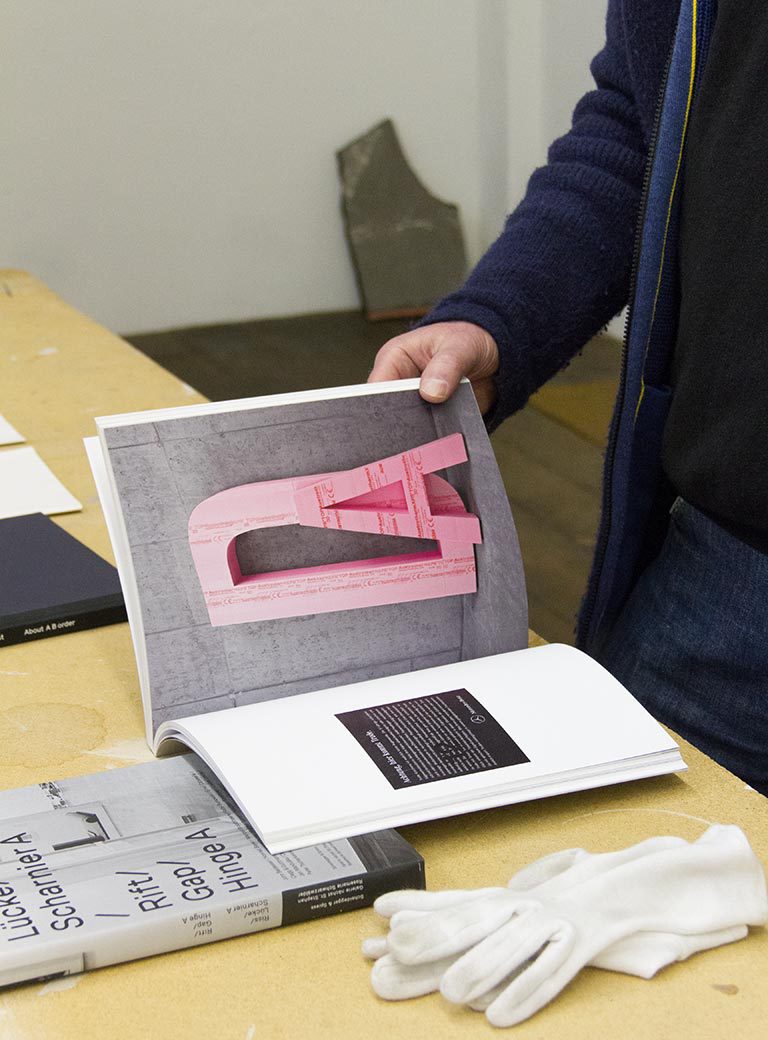
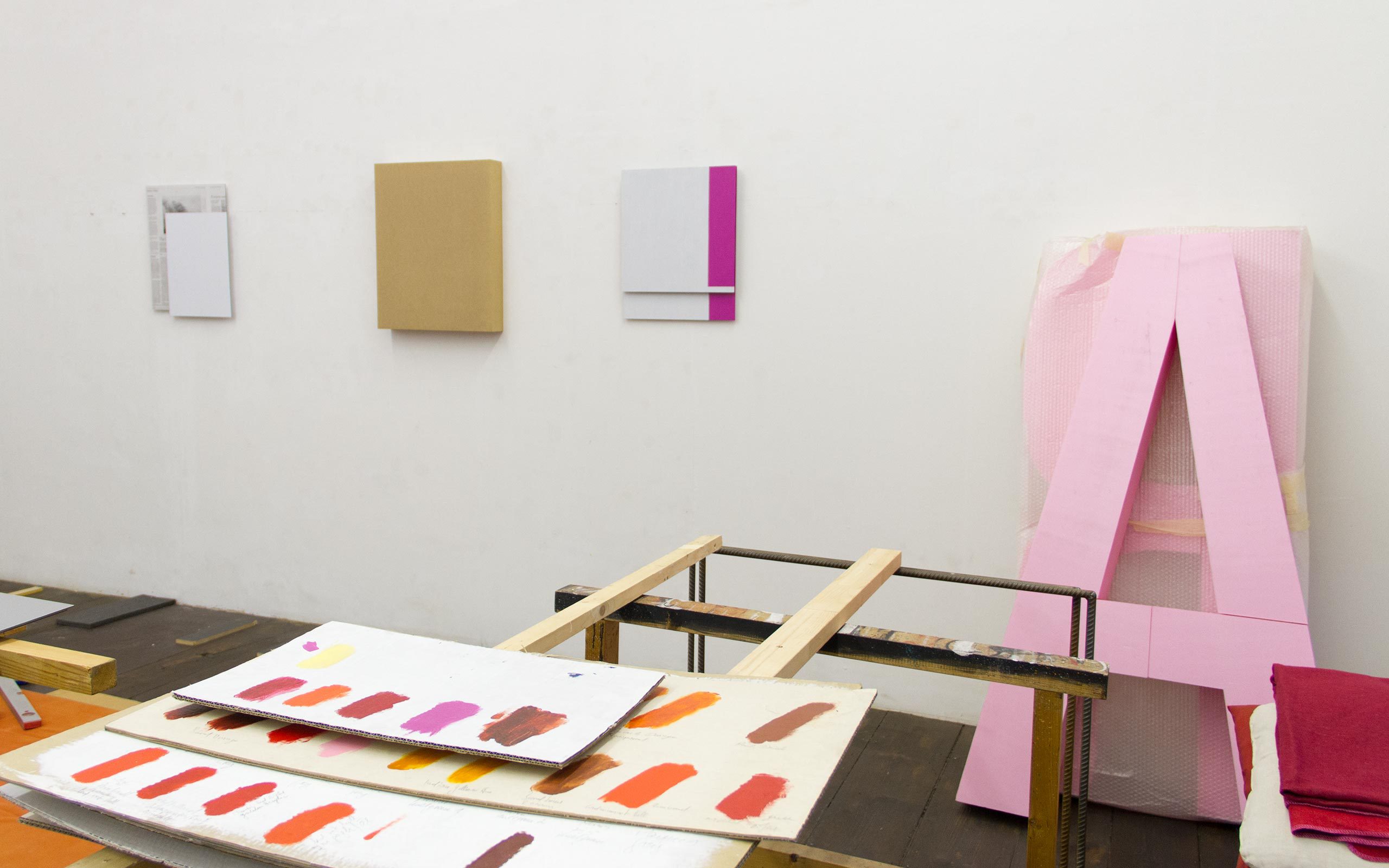
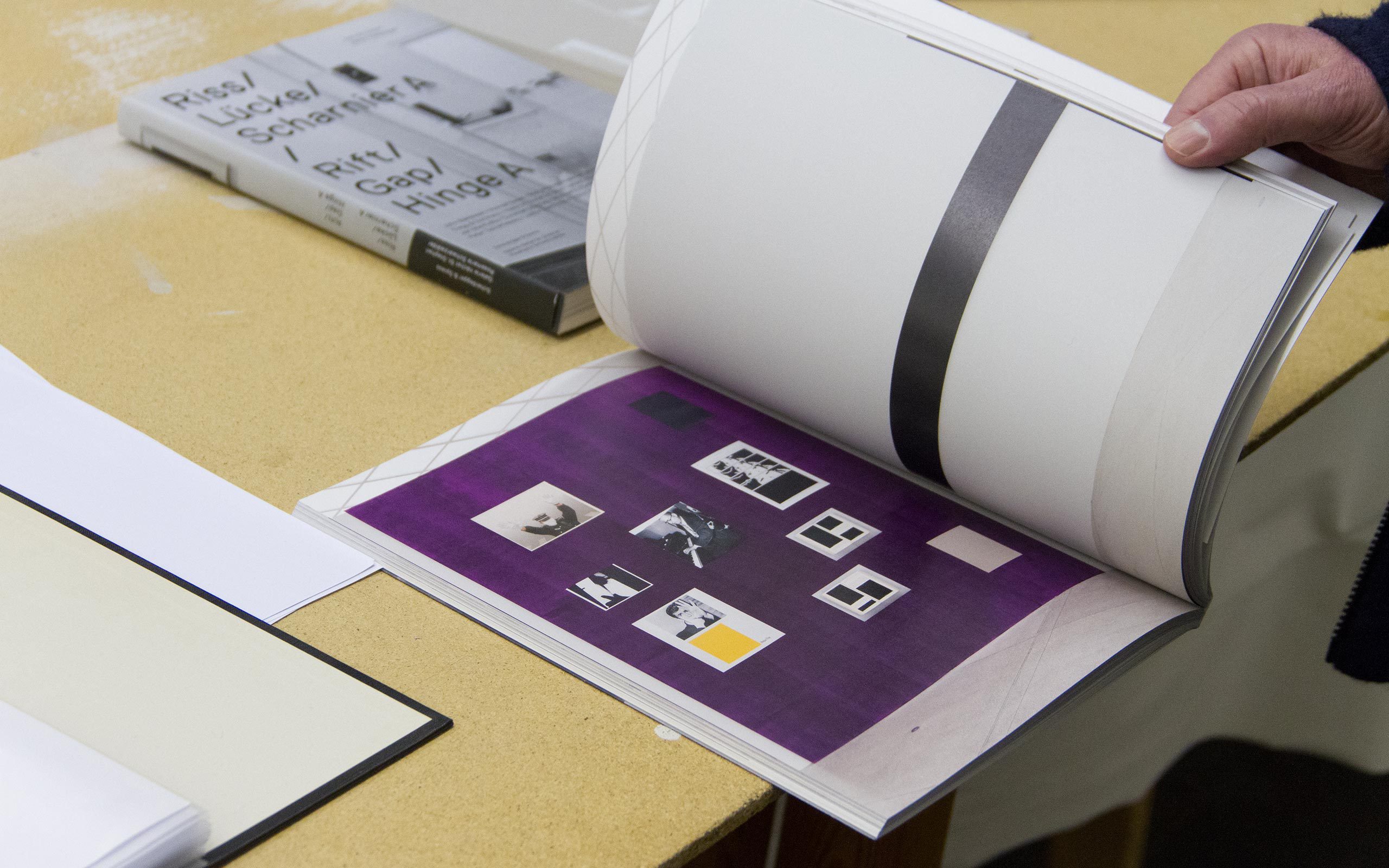
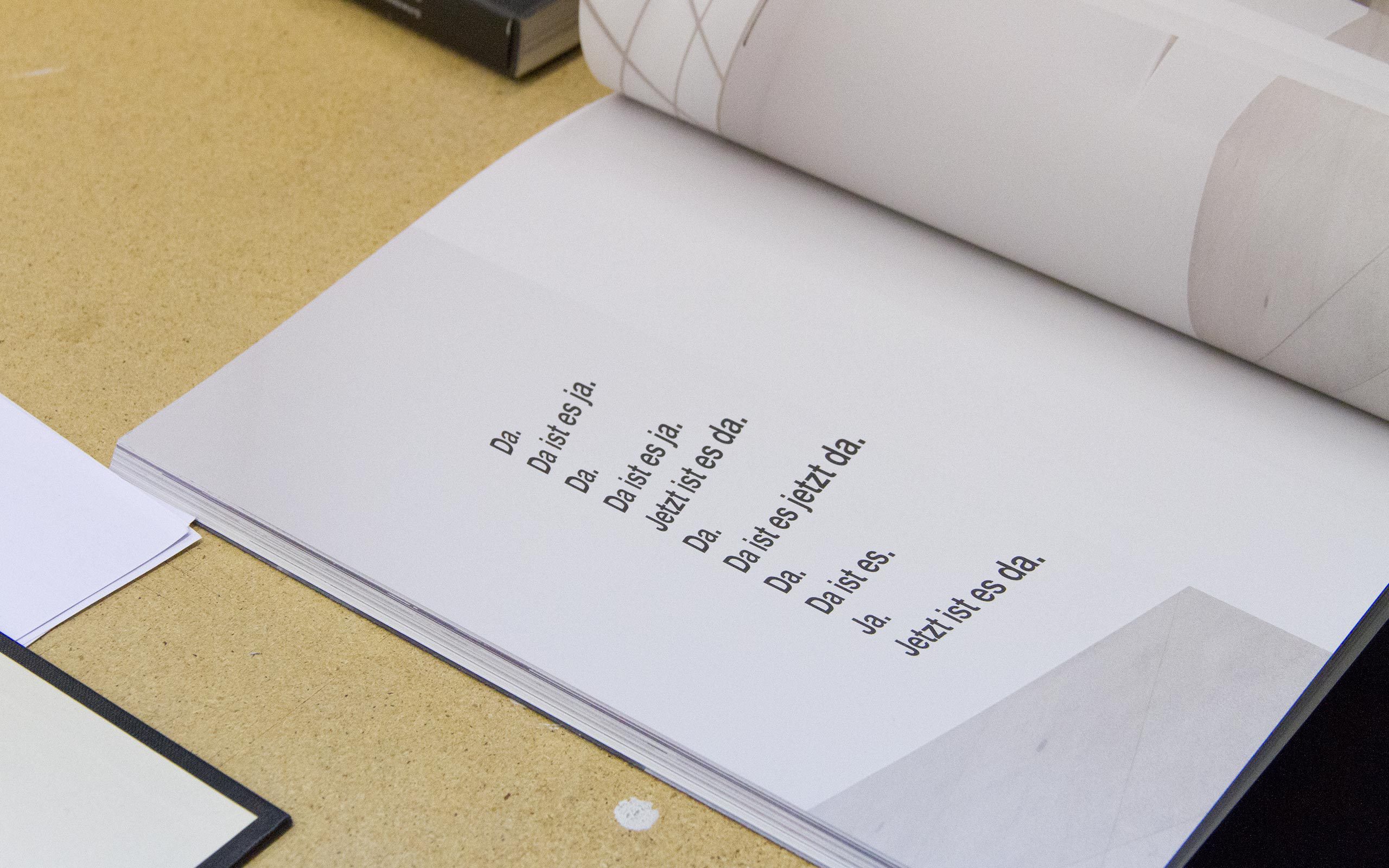
How would you say that you, as an artist, stand on this issue?
I always try to show that forms and relationships are relative, that they overlay each other, that they can rotate and have corporeality/physicality, that they change –in other words, that they always place themselves in new relationships to each other. A good example is a work by Walter Swennen, to which I once referred – a painting that depicts the quotation of a Belgian politician: ZIE DIE HIER ZIJN ZIJN VAN HIER (All those who are here are from here). When we talk about the subject of identity using this example, I find it interesting that it is a tautological loop of assertions: "I'm here because I'm from here. And because I'm from here, I'm from here." Contemporary politicians use the mechanism of this statement: "I am because I am from here. And because I am from here, I am from here. And therefore, we are for those who are from here." This work by Walter Swennen was by the way part of an exhibition at the MUMOK in Vienna, the Schürmann Collection, which included a number of linguistically structured works.
You are represented in the Schürmann Collection with your work DA.
In the work DA I tried to address the locality in the form of a sculpture. It is a small language unit consisting of two letters that expresses the locality in a completely paradoxical sense. For what does it mean when I say: It is "DA"? "DA" is not the place where the material of the form was produced. The word, however, describes the location of a representation and testifies to the existence of the sculpture, consisting of these two letters. DA carries an absurdity in it. But what then is “DA"? Suddenly we find ourselves in a paradoxical vortex! It is a strange mystery that constantly eludes a clear fixation of meaning.
Speaking of meaning, I would be interested to know how you would ideally like your work to be perceived?
I see my work as texts that constantly provoke misunderstandings and accompany me productively! There is no unambiguity that would complete this process. A computer is different because there is no misunderstanding. There is only a one or a zero. That is not the case with people. The higher the misunderstandings are, the more productive are the forms of communication. Reception is never complete, never stops! An interesting work therefore has no end.
